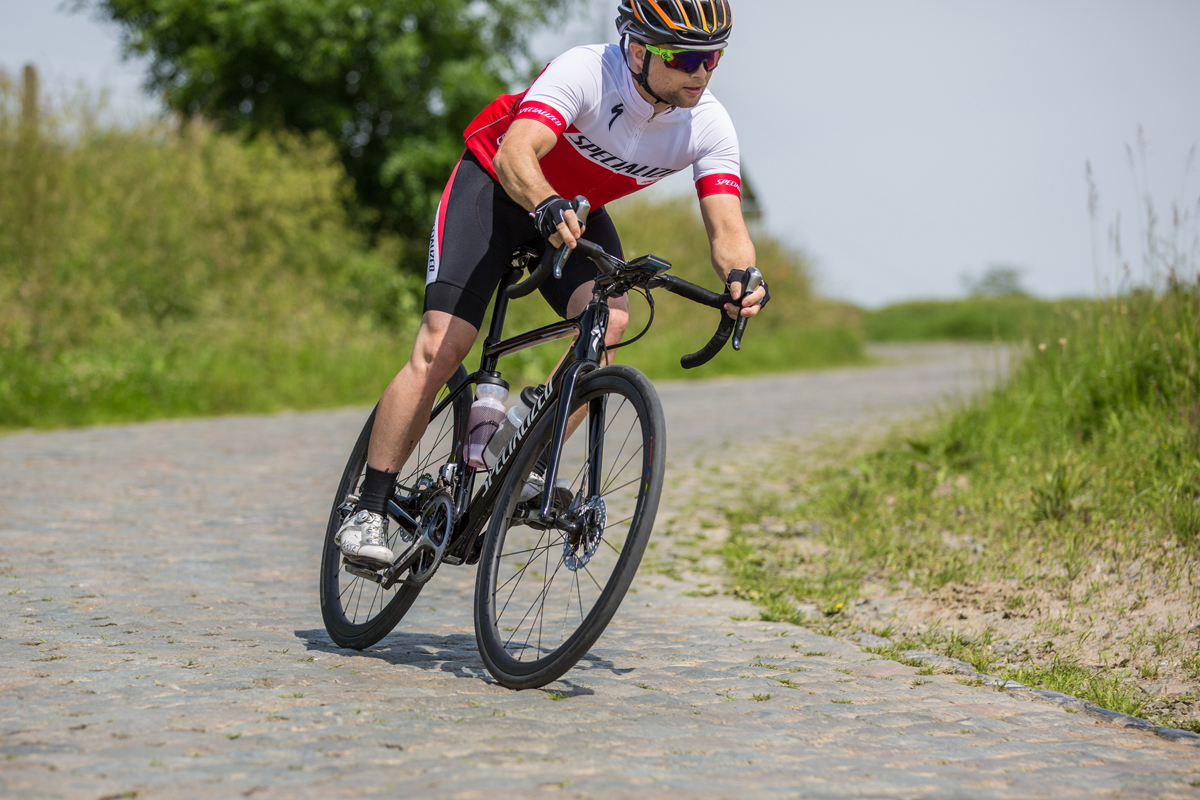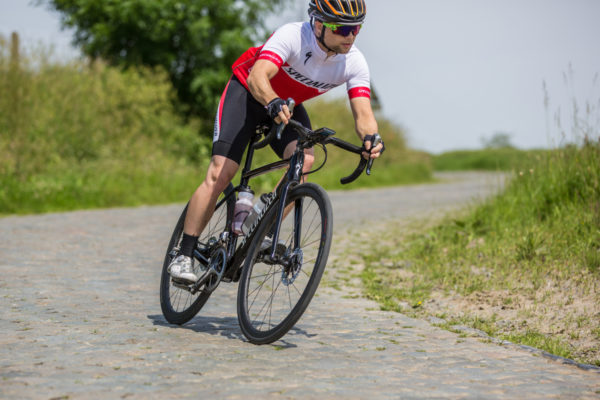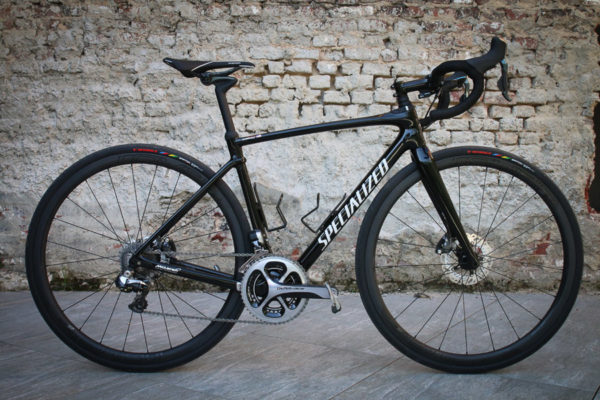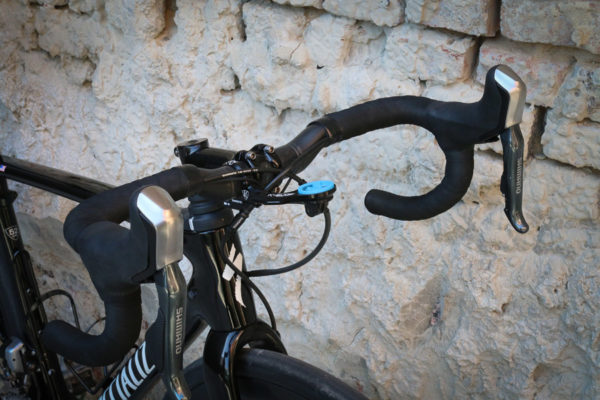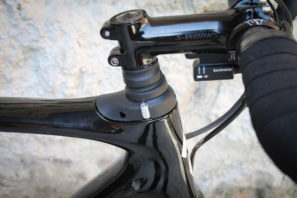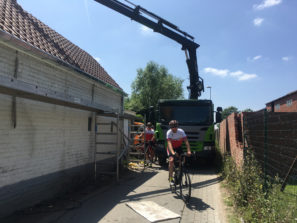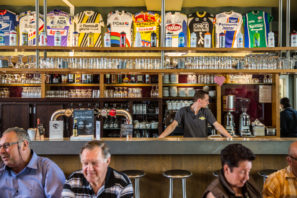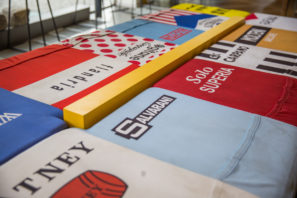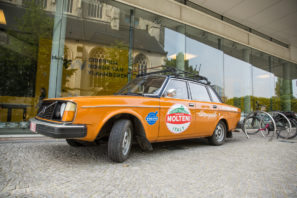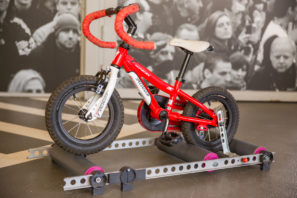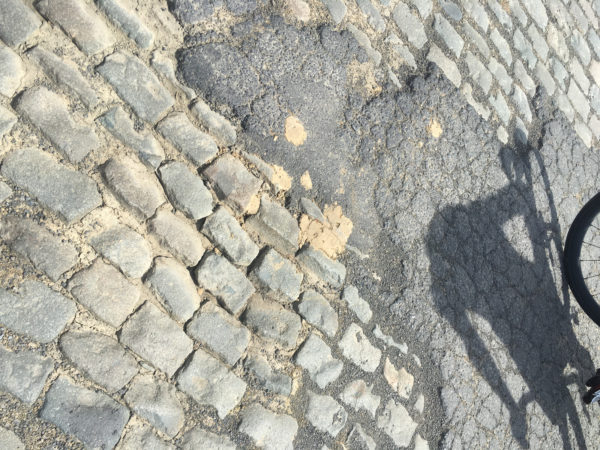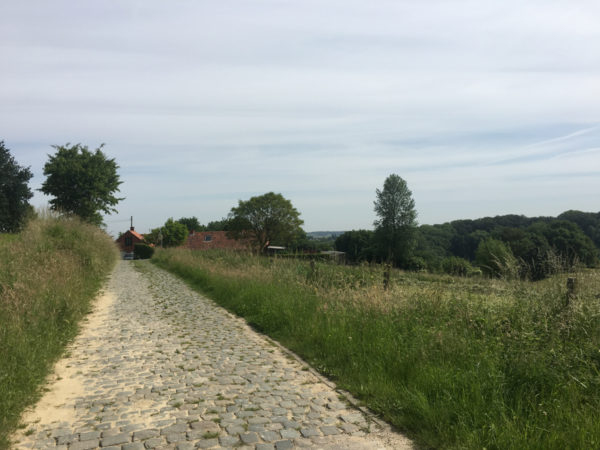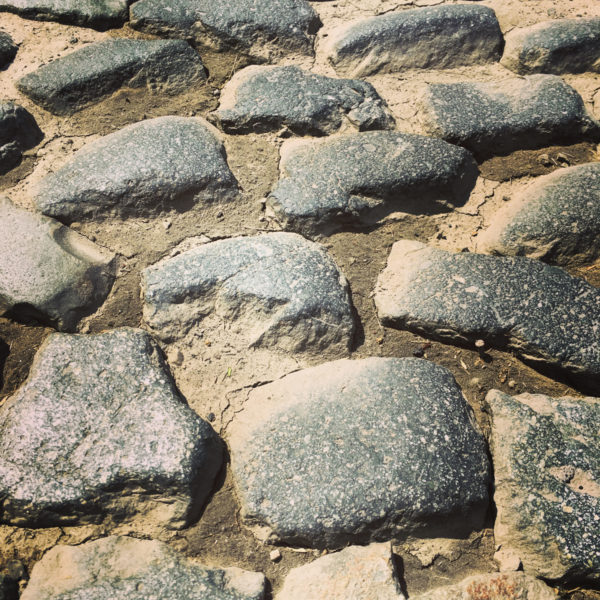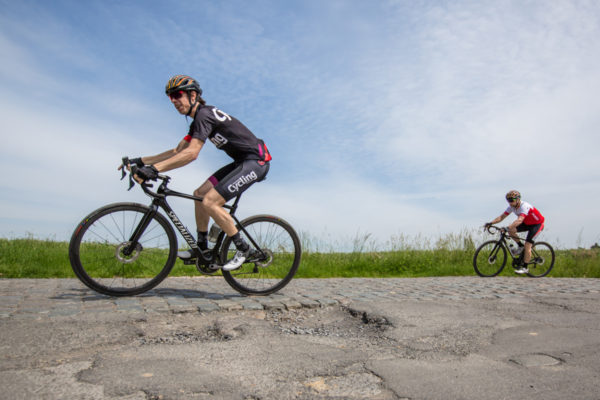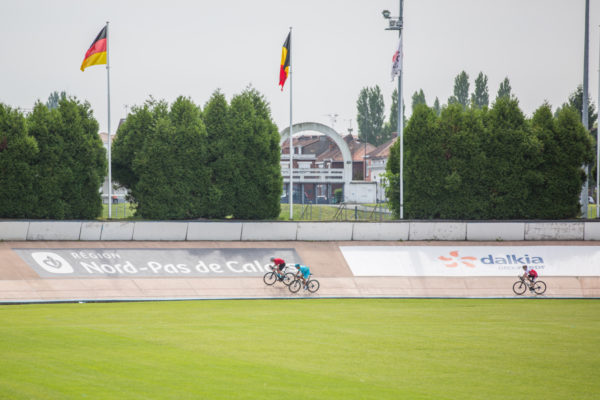When I found out that we would be headed to Kortrijk, Belgium for the Specialized launch, things started to click. We still didn’t technically know what we were going to see, but it was pretty easy to read between the lines. Not only is Kortrijk used as a base camp for major classics events, it’s also a short trip from Flanders and Roubaix. The surrounding countryside is dotted with infamous cobble sectors and varying road surfaces perfect for testing out a new bike. A bike like the all new Roubaix.
It shouldn’t come as much of a surprise that with excellent bikes like the Domane popping up, Specialized’ endurance flagship was due for a face lift. More than just a cosmetic refresh though, the Roubaix had to deliver a ride that was fast over any surface. Which led specialized to question, is smooth fast? In principle, it seems like an obvious answer. But in practice, it was much harder to prove. Specialized has relied on their sponsored athletes to help with that question for years, but for the new Roubaix, a ground breaking bike was going to require a new approach. It was time yet again to enlist the help of McLaren, only this time they would be testing how to make a bike faster by making it smoother rather than more aero.
The result of that partnership is not only the lightest frame that Specialized has ever made, but a surprising take on how to make a bike smooth and fast. The new Roubaix is something that has to be ridden to be believed, which was exactly why we were about to set out to ride some of the most infamous cobble stones in the world…
Once it was clear that were were there to see the new Roubaix, thoughts of what to expect started flashing through my head. Would we see some kind of suspension fork system hinted at by Specialized’ patent applications? Decoupler systems a la Domane? Super Zertz? There were so many possibilities that when the curtain was finally pulled from the bikes, I was a bit stunned. It looked like a bike. Nothing really jumped out as new or revolutionary, except that Zertz were no longer present. It wasn’t until Kevin Franks pushed down on the handlebars and the whole front end above the headtube bobbed that we knew something was up.
The biggest story with the new Roubaix is in the new Future Shock suspension system which resides in the steerer tube, above the head tube. The thinking is that axial compliance above the head tube keeps the riders’ hands and arms suspended for comfort and control while keeping the front end of the bike rigid and feeling racy. This was after countless hours spent by the McLaren brain trust dissecting just what makes a bike smoother, and how that translates to making it faster. Their findings indicated that anything on the bottom half of the bike added to the comfort story but made the bike slower. Adding in compliance above the seat tube and head tube made the bike just as fast, but still improved comfort.
That’s good on paper, but what is it like to actually ride? Fortunately we were in the perfect place to find out.
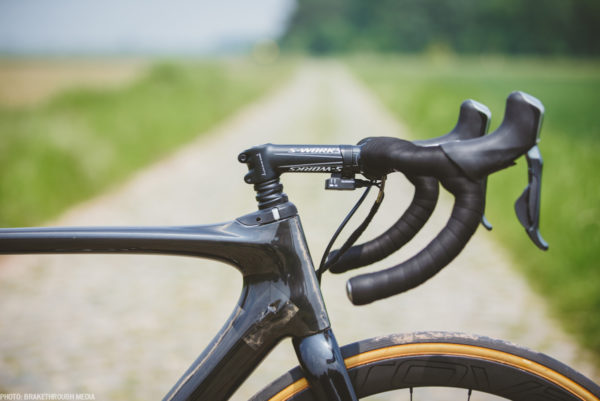
Our first day on the bike was spent getting it dialed in, adjusting fit, and feeling it out over the streets around Kortrijk. After providing Specialized with my measurements ahead of time, I arrived to a bike that was almost perfectly dialed in for my fit. Depending on the rider and the handlebar height, Specialized used either flat or riser road bars, and since I don’t have a particularly low front end, riser bars were used in my case. For the record, I’m about 5’8″ and was on a 52cm frame. In order to fit the Future Shock cartridge in the steerer, the Roubaix frame uses a much shorter head tube this year which puts the head tube height about the same when you add in the height of the cartridge. Even the real pros will still have the boot showing beneath negative stems like Boonen’s set up above (bottom picture).
While the stem can’t be moved up and down on the cartridge to change ride height, there are three different positions of the cartridge itself which provides 30mm of total adjustment range. But one of the big benefits to the system is that you can use standard stems with a shim, and between the cartridge height adjustment, different stems, and riser or flat bars, you can dial in a huge range of fits.
Additionally, there are three different main springs that can be changed out to alter the feel of the front end. Medium will be the stock rate, but soft and firm springs will also be available.
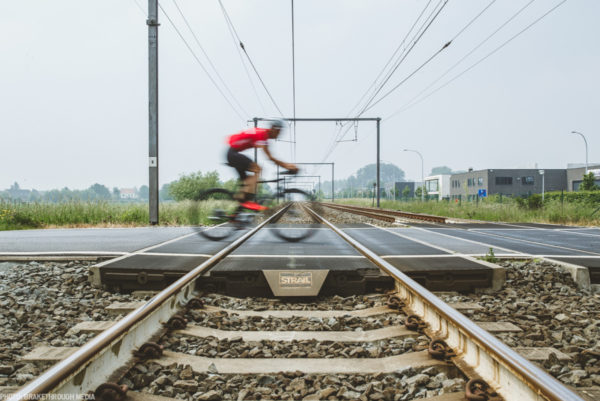
Immediately, one of the most surprising aspects of the bike is how weird it feels in the parking lot, but how quickly it becomes normal when you’re actually riding it. Due to the design of the cartridge with a main spring, booster spring, and a negative spring, the handlebar floats in between the two extremes. On extreme impacts you can actually bottom out the cartridge which still feels less abrupt than a big impact on a normal fork, and on sprinting you hardly notice the 3mm of travel before the cartridge tops out. Initially it’s an odd feeling for sure but you can certainly feel it working. After winding our way through the Kortrijk country side, it was time to prepare for the crown jewel of the trip – Flanders to Roubaix.
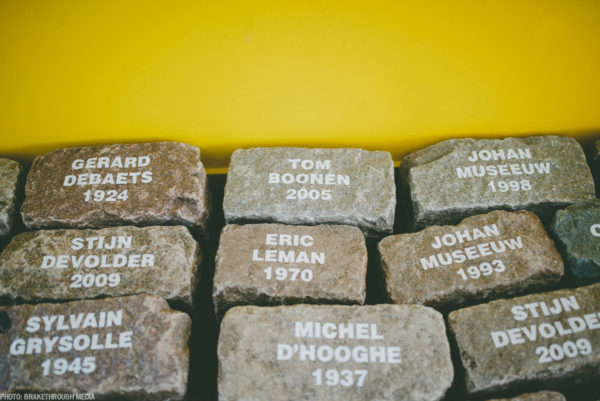
In terms of places to start a ride, it doesn’t get much better than the Centrum Ronde van Vlaanderen. Situated right in Oudenaarde, Belgium, the museum is stacked with history and the Brasserie De Flandrien provides a great way to get caffeinated for a brutal tour of the cobbles. Our route would take us from the CRVV in Oudenaarde, through some of the classic Flanders cobbles like the Oude Kwaremont and then traverse over from Belgium into France to sample some Roubaix cobbles including the Carrefour de l’Arbre before rolling into the famed Velodrome de Roubaix for a victory lap.
Talk about a bucket list ride.
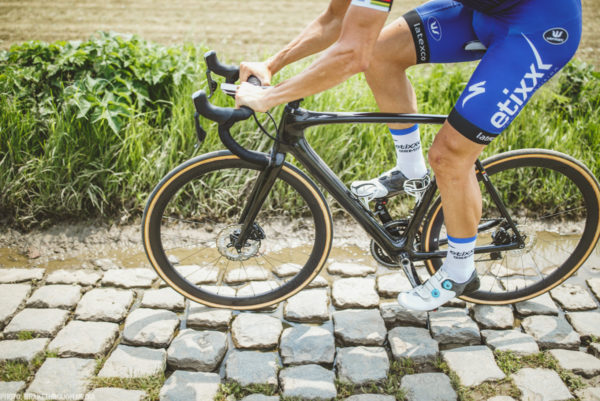
If you follow road racing at all, the cobble should need no introduction. They’re rough, unforgiving segments of time literally cast in stone. You hear about them, you see the pros wince in agony as they race across them, and yet nothing can really prepare you for them when you finally arrive. To be completely honest, I was a little intimidated going into this trip. I had only been riding for about 5 months since my injury and my shoulder, arm, and hand strength wasn’t where I would have liked it to be going into this ride. That fact only serves to highlight how good the Roubaix seems to be.
On my first true ride on the cobbles, with a group of fast riders including Astana pro Jakob Fuglsang, and my left side still not at 100%, I was completely surprised at how well I was able to ride. Don’t get me wrong, it was still some work to keep up with the lead group, but the front end was admirably controlled over the roughest sectors. One of the comments during the trip was that this was a ‘mountain bikers’ road bike,’ which seems to have some merit. To me, the bobbing of the front end was easy to get used to, but other riders mentioned how they were having a harder time wrapping their head around it. The Roubaix is almost like the road bike equivalent of a hardtail mountain bike with a supple suspension fork up front and a rigid back end, though the whole thing still feels very race oriented. And yet, because of that suspension at the front of the bike, it seemed like you could really keep your weight on the bars and power through the sectors rather than sitting up and trying to ease the pressure and vibration from the bumps. That very aspect of the Roubaix has led top pros to change how they ride the cobbles, according to Specialized. It will be interesting to see how things play out this coming Classics season as the new Roubaix is put to the test on the world stage.
The duality of the Roubaix is certainly one of its best attributes. While it manages to answer the comfort story, underneath it is very much a race bike. Between the quick handling and the efficiency of the carbon frame (our test bikes were 10R layup Project Black frames), the Roubaix feels much faster than your typical endurance road bike. In the end, the big question seems to be the acceptance of the Future Shock Suspension cartridge. Is the slightly odd feeling of a floating handlebar worth the added benefits of increased comfort and speed? In our limited time on the new Roubaix, it seems so – though the look might take some getting used to.
